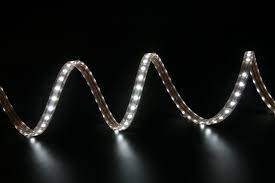LED light strips are a popular choice for adding ambient lighting to a room. They are energy-efficient, come in a variety of colors, and can be controlled using a remote or a smartphone app. One question that often arises is whether it’s safe to leave LED light strips on all night. In this article, we’ll explore the safety considerations and best practices for leaving LED light strips on for an extended period of time.
Safety Considerations:
Fire Hazard:
The primary safety concern with leaving LED light strips on all night is the risk of fire. While LED lights are generally safe and generate less heat than traditional incandescent bulbs, they can still produce heat when left on for extended periods of time. If the LED light strip is installed in a location with flammable materials or near curtains, it could pose a fire hazard.
Electrical Overload:
Another concern is the risk of electrical overload. If too many LED light strips are connected to one outlet or power source, it could overload the circuit and cause a fire or damage to the electrical system.
Eye Strain:
Leaving LED light strips on all night can also cause eye strain, particularly if they are installed in a bedroom. The bright light can disrupt sleep and interfere with the body’s natural circadian rhythm.
Best Practices for Leaving LED Light Strips On:
While leaving LED light strips on all night poses some safety concerns, there are ways to mitigate the risks and ensure that they are used safely. Here are some best practices for leaving LED light strips on for an extended period of time:
Choose the Right LED Light Strip:
When selecting an LED light strip, choose one that is designed for continuous use. Look for a product with a low voltage and a long lifespan, and avoid cheap, low-quality products that may pose a greater risk of fire or electrical overload.
Install the LED Light Strip Correctly:
Proper installation is key to ensuring the safety of LED light strips. Follow the manufacturer’s instructions carefully. And make sure the strip is securely fasten to the surface where it will install. Avoid placing the LED light strip in locations with flammable materials or near curtains. And make sure it is not touching any other electrical cords or appliances.
Use a Timer:
One way to minimize the risk of leaving LED light strips on all night is to use a timer. This will allow you to set a specific time for the lights to turn on and off. Reducing the amount of time they left unattend. Many LED light strips come with a built-in timer, or you can purchase a separate timer to use with the lights.
Use Dimmers:
If you plan to leave LED light strips on all night in a bedroom or other sleeping area, consider using a dimmer switch. This will allow you to adjust the brightness of the lights, reducing the risk of eye strain and sleep disruption.
Avoid Overloading Electrical Circuits:
To avoid the risk of an electrical overload, make sure to connect the LED light strips to a dedicated outlet or power source. Avoid connecting too many strips to one outlet or using extension cords, which can increase the risk of a fire or electrical overload.
Monitor the LED Light Strips:
It’s important to monitor LED light strips when they are left on all night. Check the strips regularly for signs of overheating or damage, and make sure to turn them off immediately if you notice any issues. It’s also a good idea to check the outlet or power source to make sure it is not overload or overheating.
In conclusion, leaving LED light strips on all night poses some safety concerns. But there are ways to mitigate the risks and use them safely. By choosing the right LED light strip, installing it correctly, using a timer and dimmer switch, and avoiding electrical overloads. And monitoring the strips regularly, you can enjoy the benefits of ambient lighting without putting your safety at risk. It’s important to note that LED light strips are generally safer than traditional incandescent bulbs. As they generate less heat and are less likely to cause a fire. However, it’s still important to take proper safety precautions when using them. Particularly when leaving them on for an extended period of time.

